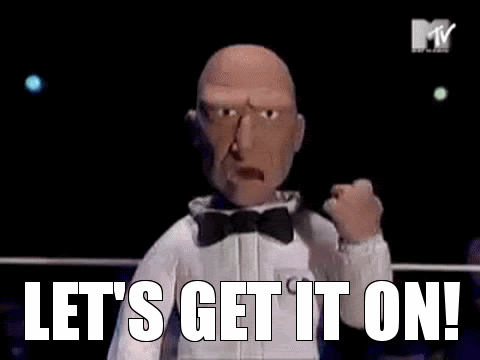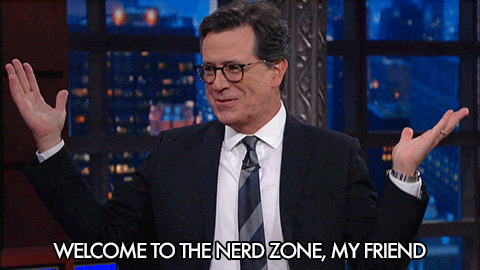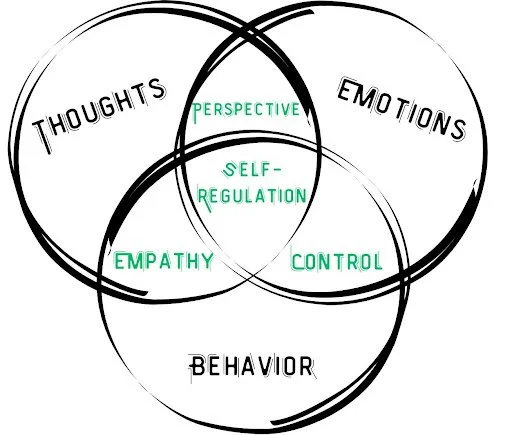You’re Not Broken. You’re Weird and You’re Wired: The Psychology of You
Get stories like these delivered straight to your inbox
Sign up for the CultureStoke Newsletter
Ever feel like your own brain is working against you? That’s not weakness—it’s wiring.
But it’s also fixable.
We all wrestle with our brains: the thoughts that race, the feelings that swirl, and the behaviors that follow.
But what if…
the key to becoming your best self isn’t about doing more or trying harder—but about understanding the psychology of you?
The term is often used, but for clarity’s sake, psychology is the scientific study of the mind and behavior—how we think, feel, and act. And if that sounds like a lot to unpack, you’re right. But it’s also vital.
Knowing you promotes the kind of self-awareness that leads to growth, resilience, and real change. Full disclosure, I am not a psychologist. I don’t even play one on TV. But I am someone who has done a metric TON of self-work, therapy, research, study, practice, more self-work, more therapy…You get the point.
I am also someone who wants you to live a life that brings you joy, fulfillment, and happiness. And it is damn near impossible to do that unless you’ve got that things between your ears sorted. In past writings, I’ve talked about the Brain Bully - that inner critic who loves to hijack your peace, question your worth, and drive your decisions from a place of fear or shame.
In this article, we’re going a step further. We’ll explore the powerful triangle of thoughts, feelings, and behaviors, and how they interact when your Brain Bully is steering the ship—and more importantly, what it looks like when you take the wheel.
Even if you didn’t read the article (you should 😉), you’ve definitely met your brain bully before—that loud inner critic that sows doubt, stirs up fear, and messes with your mojo. I’ve written about it in the past, and we’re taking things further in this article. We’re breaking down the core trio—your thoughts, feelings, and behaviors—and showing what happens when your Brain Bully is in charge… versus when you are.
At its core this article is about self-regulation—the ability to stay cool, calm, and in control, even when life throws you curveballs.
When you understand the psychology of you, you stop reacting and start leading.
Let’s get into it.
As mentioned above, psychology is the study of our thoughts, emotions, behaviors and their relationship with one another (among many other brain-related topics, but those are for a different article).
In this article, we are going to focus on:
The definitions of thoughts, emotions, behaviors and self-regulation
Their relationship when you are in control (self-regulated) and when your bully is winning.
Some tips on how to take back the reins when your bully has taken over
Terms
It may seem unnecessary to define each of these. However, it has been my observation that when it comes to self-discovery, self-regulation, and general deep dives into brain stuff, we have a tendency to conflate them, and it is their distinctions that make them important.
Thoughts: Mental processes that involve the manipulation of information to form ideas, solve problems, make decisions, and reflect. They can include beliefs, judgments, memories, and interpretations that influence how we perceive and respond to the world around us.
Put simply, thoughts are the running commentary in your mind—they shape how you make sense of yourself, others, and your experiences. The key thing I would like to highlight is the part that says “manipulation of information.” This is one area where we need to be very conscientious. The reality is our thoughts are often distorted, biased, or based on old stories and fears. They're not always accurate reflections of reality.
Our thoughts are not the truth but the current understanding of the world around us.
Emotions: Emotions are complex psychological states that involve a subjective experience, a physiological response, and a behavioral or expressive response. They help us quickly interpret and react to important events, often before conscious thought kicks in.
In simpler terms, emotions are your brain and body’s rapid-response system to what's happening around (or inside) you—serving as signals that guide decisions, behavior, and connection with others.
I want to dispel this notion that our emotions are irrational and thus should be ignored or controlled. Or, even worse, judged for their very existence. Contrary to popular belief, your emotions are highly valuable. Hell, they are tied to our very survival.
Emotions are not good or bad–they just are.
And, what they are, are super helpful in decision making, relationship building and staying safe. Our emotions are instructive. They are trying to tell us something about ourselves and/or the world around us. The goal is not to control them. The goal is to understand them and regulate them so they work for us.
Thoughts versus Emotions: If you are having a hard time distinguishing between thoughts and emotions, that is one of the reasons for this article. People are messy, and it's because of our brains. Your thoughts are your mental processes–beliefs, biases, judgments, and self-talk. These happen exclusively in the brain and are entirely based in the neocortex, the outermost part of your brain that controls your higher cognitive functions like critical thinking and language. Emotions are a psychological AND physiological phenomenon processed in the brain and the body. Emotions are wildly complex and are your response to stimuli, and are primarily controlled in the limbic system. Thoughts are typically slower in response, requiring much more processing, whereas your emotions are faster and more automatic.
Behaviors: Behavior refers to any observable action or response of an individual to their environment. This includes everything from physical movements to verbal expressions and even physiological reactions that can be measured.
Behaviors are simply the observable acts. Things we can see or hear in ourselves and others. Our thoughts and our emotions greatly influence them, but any behavior we do is one we choose to. Our behavior is not who we are - behavior is what we do. It is a sad truth that we will judge ourselves and others harshly based on our behavior without understanding that there is something deeper. Our behavior is influenced by our thoughts, emotions, habits, stress and myriad other factors. What it also is, is changeable. When we take time to understand what's behind the behavior, we gain the power to choose to behave differently. People weren't born broken, lazy, racist, sexist, driven, ambitious, or generous. All of those things are learned. And, what is cool about things that are learned is they can be unlearned (when bad) and grown (when absent). You can teach an old dog new tricks.
No one should even justify their behavior with “that's just who I am,” because that is only true if they choose to be that way.
The Power of Self-Regulation: Self-regulation is the ability to manage your thoughts, emotions, and behaviors in ways that align with your goals, values, and situational demands. It involves controlling impulses, dealing with stress, adapting to change, and staying focused and intentional, especially in challenging moments. This crap is easy when life is good.
Self-regulation is your skill and ability to keep a cool booty when life gets stressful. This means making choices that reflect your best self, not just your loudest feelings.
The Distinction is Important: I know that was a lot. But to get to a place of self-regulation, we need to know the players in the game.
Thoughts: Mental interpretations of the world.
Emotions: Felt experiences about the world.
Behaviors: Observable actions in the world.
When these three forces—thoughts, emotions, and behaviors—collide without awareness, things get messy.
Ok, enough nerd stuff. Let’s get practical.
Here’s what that chaos can look like.
What’s Going On When the Bully is Winning
This diagram shows psychology's interactions when the bully has taken the wheel.
Thoughts + Emotions = Stories
Stories (also known as a narrative, or cognitive narrative) are the filler we put around events in order to make sense of the world. They are crafted in the space between our thoughts and our emotions.
Seriously.
They are the things we make up to make things make sense. They may be the truth, but they are not things we know for certain until they are confirmed. Here is an example of how stories show up:
Event (the thing that actually happened): A friend cancels plans at the last minute
Emotion (how we feel about it): Sadness, anxiety, anger
Thought (our mental interpretation): They probably got a better invite from someone else
Story (the thing that confirms our feelings and thoughts): My friend obviously does not like me or I am not fun to be around
In the absence of data, we will create stories. The hard part is not making those stories the facts.
If we just left stories at that, they would be less of a problem than they are. However, those stories don’t go away. In fact, they continue writing chapters and, without proper grounding and intervention, can eventually become so ingrained that they become a “truth” that is difficult to disprove. We see what we want to see because it's easier than what actually is. Stories are the meaning we make—not the facts, but the feelings we attach to them.
Emotions + Behaviors = Outburst
We have all been there. The emotion train feels like it's running full-steam ahead, and the logic train has derailed sometime back. Maybe a table gets flipped, a voice gets raised, or someone retreats into themselves. Here's the thing: Those outbursts are typically not about the moment but rather repressed or unprocessed emotions that have built up over time. Here is an example:
Event (the thing that actually happened): Someone cuts you off in traffic
Emotion (how we feel about it): Disrespected, not considered, angry
Behavior (the thing(s) we did): Yell, blare your horn, tailgate, cut them off back or give 'em the old 🖕🏻
Outbursts should be treated like a signal, not a flaw - a feature, not a bug.
When intense emotions meet unchecked behavior, we get outbursts - those moments when we say or do something reactive, impulsive, or even explosive. In keeping with the example, outbursts happen when your feelings hit the gas and your brain forgets the brakes.
Thoughts + Behaviors = Avoidance
In an effort to “protect” (and given the societal stigma of emotions), our brains will look to keep it rational. Which means rationalizing why we should not be feeling the way we are, and that is where we get into trouble. That level of rationalization is just repression in a fancy hat.
When we do not take our emotions into consideration, we are more prone to conflict avoidance and/or avoiding addressing the stories/trauma that those emotions are trying to make us aware of. After all, your feelings are instructive; they are trying to teach you something about yourself. This avoidant behavior is putting off easier work now, for harder work later. Any armchair psychologist will tell you repression never ends well. Here is the brain bully at work:
Event (the thing that actually happened): Someone at work takes credit for your work
Thought (interpretation/avoidance): “It’s not worth the fight,” “I don’t want to rock the boat,” “I don’t need the validation of my hard work”
Behavior (the thing(s) we did): Stay silent, “forget” about it (Note: You won’t)
Your thoughts predict failure, rejection, or discomfort - even when your feelings tell you something isn’t right.
Avoidant behavior is sometimes necessary. Look, every slight and/or feeling is not worth the consequences it may bring to self or others. But every situation is worth the internal discussion and being real about it. Don’t make avoidance a default setting. You are worth taking and making space for in the world, even if it may rock the boat.
Your Brain Bully doesn’t just live in your head - it hijacks your heart rate, tightens your chest, and fuels behaviors you barely recognize. It’s not just mental - it’s physical. But the moment you start tuning in instead of checking out? That’s where self-regulation begins. Let’s go there!
What’s It Look Like When You Are the Captain Now
I will not lie to you – this is another one of those things in life where there is no finish line. There is no Nirvana. There is no reaching of full enlightenment where self-discovery and self-regulation are achieved.
And I think that is the point.
We should be endlessly curious about ourselves, what makes us tick, and why we are the way we are. Maybe that is Nirvana. We must accept that we will never be a finished product; in that acceptance, we can be perfect in our imperfections.
In the next section, I will present the model differently, what it looks like when we are self-regulating, again, not regulated, that implies finality, but when we are in the process of regulating.
Thoughts + Emotions = Perspective
Perspective is a wonderful thing. Perspective is “the power to understand things in their true relationship to each other.” When our brain bully wins, we only see the story validating our feelings and thoughts. When self-regulated, we will still tell stories, but we can see lots of potential stories. We can put those stories in their proper perspective. Take the example from above: “My friend obviously does not like me, or I am not fun to be around.” Maybe that is true, maybe your friend doesn’t like you. But, do you know this? Or, do you just think this because you feel sad.
Recommended Practice: Next time you find yourself telling a story, say to yourself (or better yet, write it down), “What are three other stories I could tell?”
Example: Friend cancels plans
Story: My friend canceled plans because, obviously, they don’t like me or I am not fun to be around.
Alternative Story 1: My friend had something come up and genuinely feels bad about cancelling plans. Maybe this wasn't about me at all.
Alternative Story 2: My friend made up a reason to cancel plans because they were dealing with something and did not want company. Maybe this wasn't about me at all.
Alternative Story 3: My friend cancelled plans because the activity we had planned sounded unappealing to them, and they would rather not participate. Maybe this wasn't about me at all.
You probably noticed a theme. One of the special things about perspective is that it can be a reminder that we are not the main character in the story, no one is. One of our brain bully’s slickest tricks is convincing us that we are the reason that anyone in our life does anything, especially if it confirms a negative thought or feeling we have about ourselves. Ultimately, the only way we can know the true story is to seek out the data. Which would be a behavior I highly recommend.
Emotions + Behaviors = Control
It is important to feel our feelings, it is just as important to choose how we respond to them. Our brain bully acts abruptly – reactionary by nature. It is the see and respond nature that makes it amazing for survival, not great for self-regulation. When we are regulating like we should be, we are able to feel something, even feel it strongly but still choose how we react to it with intention.
That’s control.
Example: There is a disagreement imminent
Unregulated: Interrupting, snapping, ejecting from the situation.
Regulated: Taking a breath, acknowledging the emotions and scenario in the room, responding with calm.
The goal is not suppression or perfection. Don’t get me wrong, there are times for righteous indignation, there are even times for raising our voice. But, those times should be far and few between. There are very few things in life that deserve genuine behavioral escalation (yelling, fighting, etc.). We should be making a conscious choice to not react. The goal is to respond on purpose, not impulse.
Recommended Practice: When you feel your emotions being peaked (sad, angry, happy, etc.), take 30 seconds to focus solely on your breathing. When our brain is sending us signals that something is wrong it activates the sympathetic nervous system (fight, flight, freeze) our breathing shallow and rapid and, if not managed, can become a runaway train. That response is the survival instinct, but not one that lends itself to self-regulation and control.Conversely, slow and deep breathing activate the parasympathetic nervous system which is our rest and process state. Our heart rate lowers, our cortisol drops and our body and brain gain alignment. Once you feel more stable, then make your choices. Below is a gif that I use regularly to help me be queued into my breathing.
Bonus Practice: Once some time has passed, do some deep work on where those emotions came from. What was the root of it? See if there are things you need to process or address that are causing elevated responses to particular situations. Capture these thoughts in writing (yes, journaling, its awesome) and then develop some grounding techniques to help deal with them in the future.
Control is not putting your emotions on mute. It is choosing the volume of your response, taking ownership of your life and not letting your brain bully own the space between your emotions and your actions.
Thoughts + Behaviors = Empathy
Where our brain bully does some truly insidious work is when it convinces us that it is being the logical one in the room, when in reality we are avoiding dealing with the emotions of others and ourselves.
Super honesty time…this is/was a go to response for me. It became a form of repression. I would become cold and analytical during times of conflict, avoiding any and all discussion about emotions because feelings are not data and are not helpful in problem solving. That was a slick deceit my brain bully pulled on me to keep myself protected from dealing with the real issues.
When we are self-regulated our thoughts and behaviors should point to our emotions, not run away from them. That is how we can build empathy for others (the ability to understand and share the feelings of others) and have self-empathy (treating ourselves with kindness and understanding in the midst of our own shortcomings).
When we can align our thoughts to understand the situations(for all parties involved) and show up (behave) in a way that reflects our understanding that is empathy as a super power.
Example: A coworker, friend, human looks upset.
Thought: They seem like they could use support
Behavior: Checking in with curiosity without looking to “fix them”
I am reminded of a time when I had a co-worker hit me up after a meeting. What he did was profoundly simple, yet simply profound. He reached out and let me know he noticed I was not acting like myself and simply shared that he was there for me if I needed him. I didn’t take him up on the offer but here is what that simple act did. It made me feel seen, supported and cared for. And, honestly, what else could we possibly ask for in a teammate?
Empathy is not simply an emotion. Empathy is a skill. It takes conscious effort and behavior-forming practice to build. When we don't behave empathetically, empathy only lives in our head. When we practice empathy without thoughtfulness it can become performative.
Recommended Practice: Find opportunities to employ a 3-step practice (do it daily for reps 💪🏻)
Read the Room (observation): Pause and observe someone who is acting differently in the room/meeting. Assess their tone, body language, facial expressions and/or behavior. Ask yourself “what might they be in this moment?” Just analyze the facts without iterating meaning, what are they doing or not doing that is out of the norm.
Interpret the Signs (interpretation): Ask yourself why. Put yourself in the other persons shoes, don’t base this on your own experience but what might be true for them. What might they be feeling? What might be driving that? The idea here is not only to imagine yourself in their situation but also truly understand their unique perspective. Cognitive empathy is the understanding of another person’s mental/emotional state with actually sharing their emotions (emotional empathy).
Alight the Action: Let them know you noticed (behavior). Inquire as to how they are and if they could use any support; an ear, a shoulder, a hand or space.
When we are self-regulated we are able to get out of our own head, and into the world. Real empathy happens when we are not just feeling for someone—it’s thinking about them, and showing up accordingly.
Final Thought
If you made it this far—first, thank you. I know this was a long read, and let’s be real... not a light one either. The intersection of thoughts, emotions, and behaviors is complex, messy, and deeply personal.
But it’s also where the growth happens.
Understanding how your inner world works isn’t just self-help fluff—it’s real, transformative work. The more you recognize your patterns, the more power you have to shift them. That’s what self-regulation is all about.
So here’s your invitation:
Start small. Pause often. Breathe. Notice. And choose—intentionally—how you want to show up.
You won’t always get it right (none of us do), but with practice, you’ll stop reacting and start leading—yourself first, and others by example.








